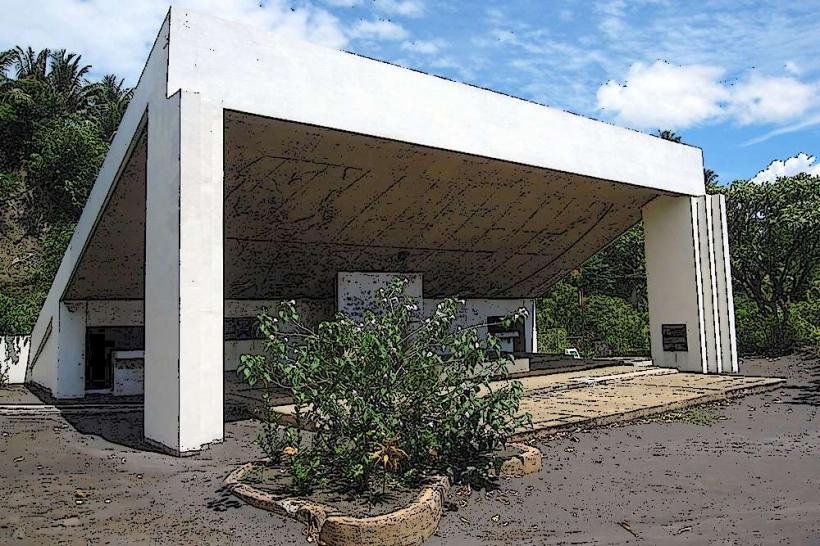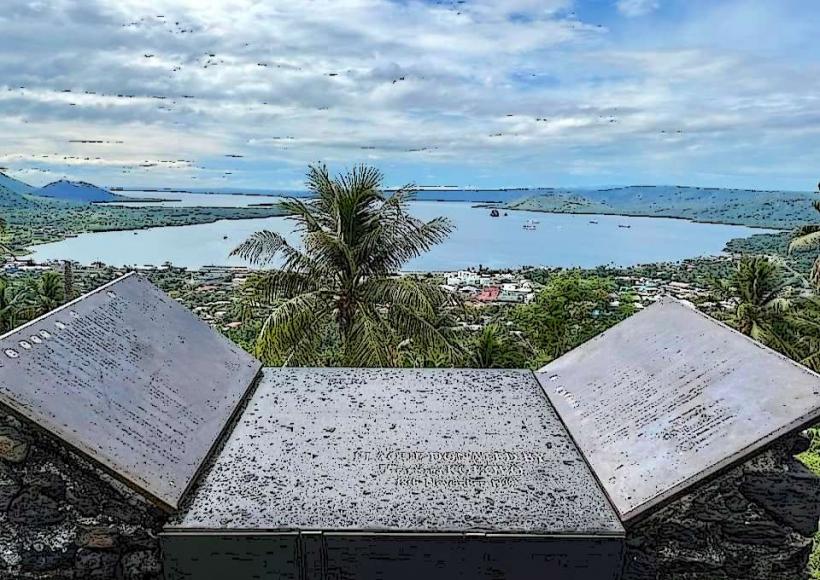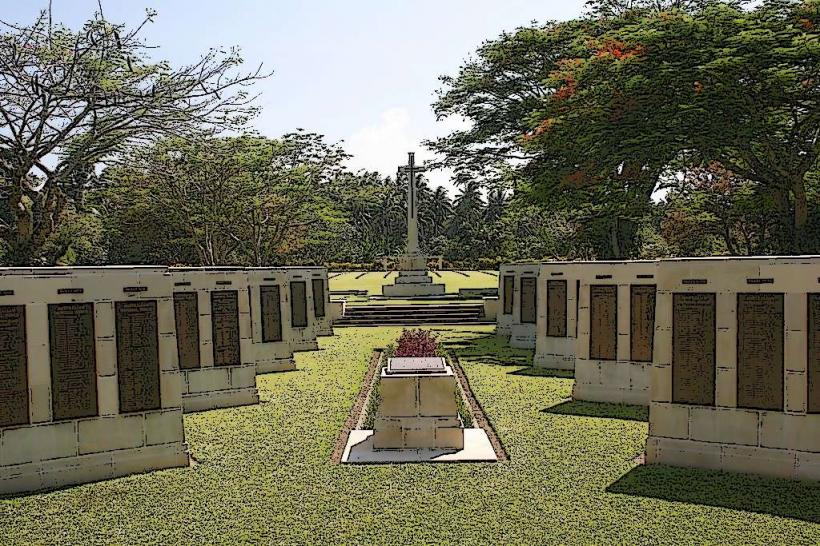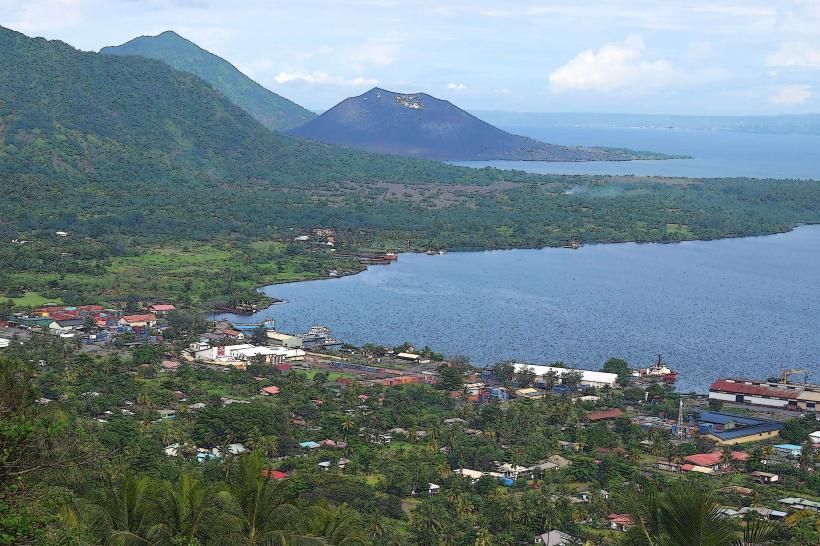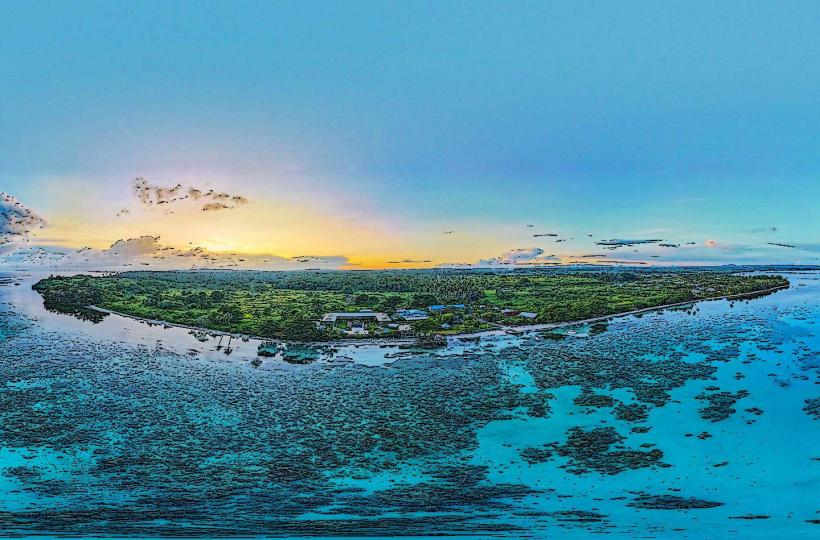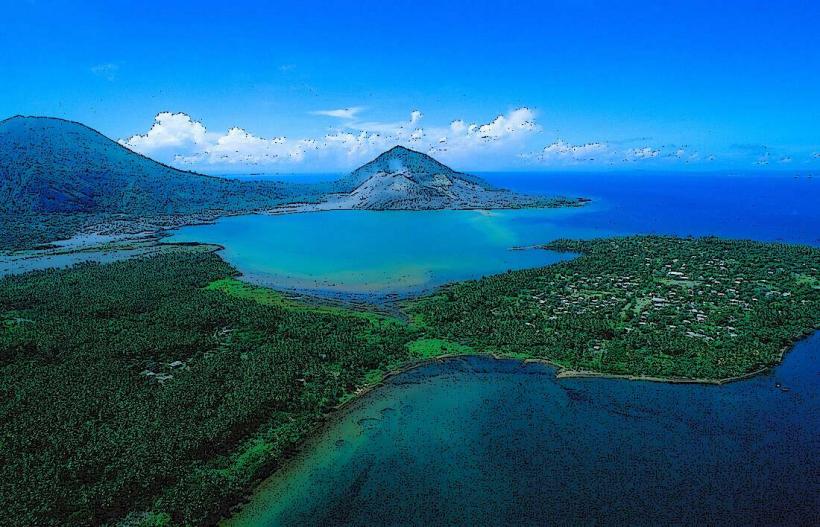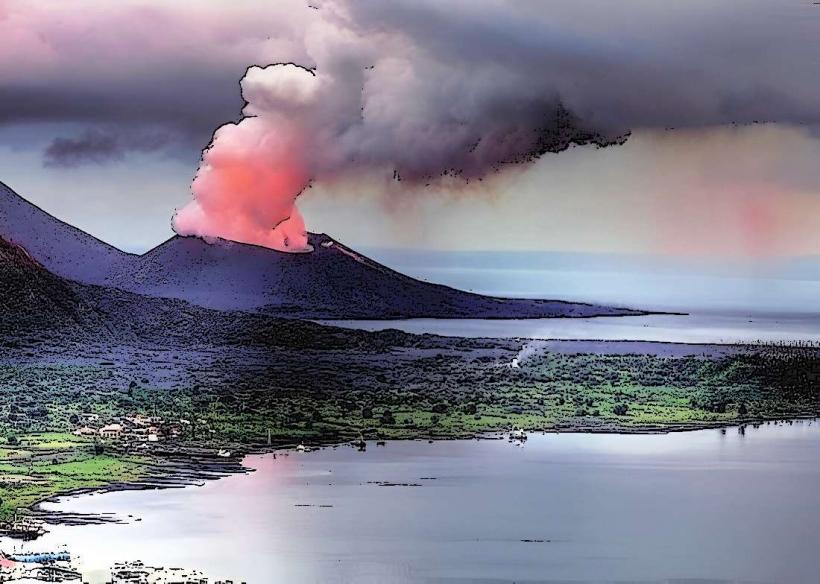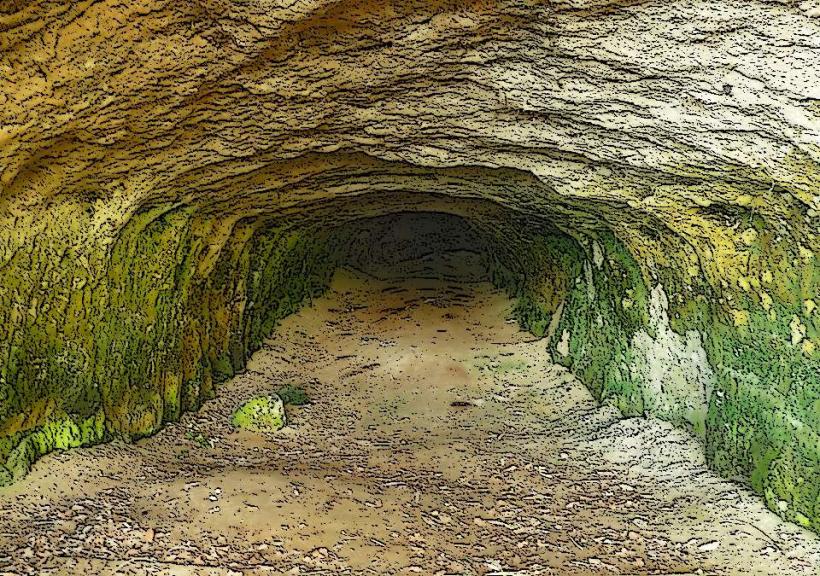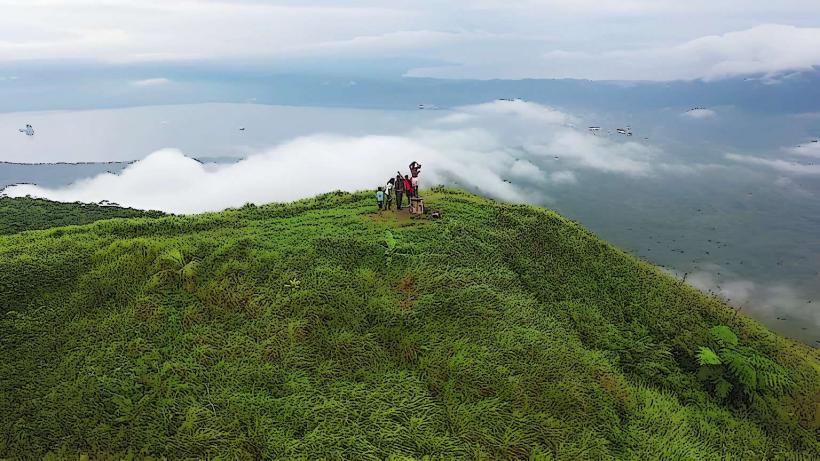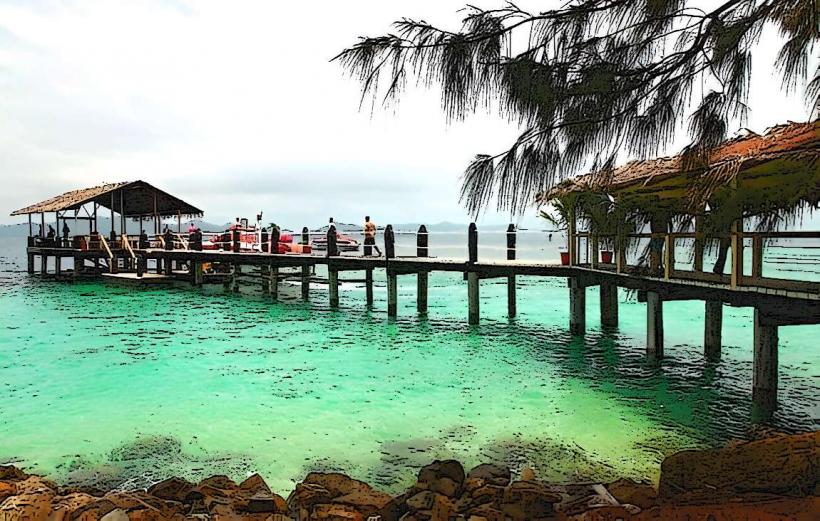Information
Landmark: Rabaul Cultural MuseumCity: Rabaul
Country: Papua New Guinea
Continent: Australia
The Rabaul Cultural Museum is an important museum located in Rabaul, the capital of East New Britain Province, Papua New Guinea (PNG). The museum plays a vital role in preserving and showcasing the rich cultural heritage and historical significance of the region. As Rabaul was a prominent center during World War II, the museum not only focuses on the indigenous cultures of the area but also highlights the impact of the war and the local history related to colonialism and independence.
Historical Context and Establishment
- Founding: The Rabaul Cultural Museum was established in 1991 as a way to preserve and promote the traditional culture of the East New Britain region, along with artifacts from the colonial era and the World War II period. The museum was set up by the East New Britain Cultural Association and aims to serve as a resource for understanding the diverse cultural traditions of the indigenous peoples of the area.
- Location: The museum is located in the heart of Rabaul, near the famous Tavurvur volcano, offering both an accessible and educational destination for visitors. It is located within a building that was once used for colonial administrative purposes, which adds historical significance to the site.
Exhibits and Collections
The museum houses a wide range of exhibits that reflect the history, culture, and natural environment of East New Britain Province and the broader Papua New Guinea region. Some of the key areas of focus include:
Indigenous Culture and Traditions
- Traditional Artifacts: One of the primary focuses of the museum is showcasing the traditional culture of the people of East New Britain, including the Tolai, Baining, and Nakanai communities, among others. The exhibits display traditional tools, weapons, ceremonial objects, and clothing that were used by these groups in their daily lives and cultural practices.
- Notable displays include carved wooden masks, war shields, baskets, and canoes, which reflect the craftsmanship and functional artistry of the indigenous peoples.
- Traditional pottery and woven mats are also part of the museum’s collection, highlighting the region’s rich cultural heritage.
- Cultural Practices: The museum provides insights into various traditional customs, including ceremonial dances, rituals, and festivals. Displays often focus on the role of rituals and sacred ceremonies in the community’s spiritual and social life.
Colonial History
- German and Australian Colonial Period: Rabaul was once a part of the German New Guinea colony in the late 19th and early 20th centuries, and later came under Australian control after World War I. The museum’s collection includes items related to this period of colonial rule, such as maps, photos, and military memorabilia.
- Displays detail the impact of colonialism on the local population, the introduction of Western governance, and the changes in local society during this time.
- The museum also features records and photographs documenting the lives of the colonizers and their interactions with the indigenous peoples.
World War II
- Impact of World War II: The museum has a significant collection of exhibits related to the Japanese occupation of Rabaul during World War II, as well as the subsequent battles between the Japanese Imperial Army and Allied forces. This period dramatically shaped the history of the region, and the museum offers an in-depth look at the events that occurred.
- Artifacts from the wartime era include military equipment, weapons, Japanese uniforms, and personal items from soldiers and civilians. There are also photographs of the Rabaul airstrips, naval bases, and other military structures built by the Japanese in the region.
- Allied Air Raids: The museum provides information on the extensive Allied air raids that targeted Japanese forces in Rabaul, and visitors can see memorabilia from both the Australian and American military campaigns. The devastation caused by these raids and the role of Rabaul as a major battlefront in the Pacific theater are prominent features of the museum.
- The museum also highlights the resilience of the local population during and after the war, detailing their experiences as part of the war effort, as well as their recovery in the post-war period.
Natural History and Environment
- Geology and Volcanic Activity: Given Rabaul’s location near active volcanoes like Tavurvur and Rabaul Volcano, the museum also has exhibits focused on the geology and volcanic history of the region. This includes information on the catastrophic volcanic eruption of 1994, which caused extensive damage to Rabaul and reshaped the town’s landscape.
- The museum explains the geological features of the Rabaul Caldera and the risks posed by the region’s active volcanoes. It also covers the natural disasters and the recovery process following the eruption, offering insights into the resilience of the local community.
- Flora and Fauna: The museum features displays of the biodiversity of East New Britain, including information about the unique plant and animal species found in the region. This section emphasizes the importance of conservation and the role of local communities in preserving their natural environment.
Educational Programs and Cultural Events
- School and Community Outreach: The museum serves as an educational resource for students, researchers, and local communities. It regularly hosts workshops, lectures, and cultural performances aimed at educating the public about the history and traditions of the region.
- The museum often collaborates with local schools, providing educational programs that help younger generations understand the cultural heritage and history of East New Britain.
- Cultural Festivals: The Rabaul Cultural Museum is also involved in hosting and promoting cultural festivals and traditional dance performances, which are held periodically in Rabaul. These festivals allow visitors to experience live traditional music, dance, and performances that bring the exhibits to life.
Visitor Experience
- Opening Hours and Access: The museum is open to the public, and visitors can explore the exhibits during regular hours, with some sites offering guided tours. Local guides, often knowledgeable about the history and cultural practices of the region, lead the tours, providing additional context and stories about the exhibits.
- Facilities: The museum is equipped with visitor facilities, including a gift shop where visitors can purchase locally crafted souvenirs and artifacts, such as traditional mats, carvings, and jewelry. These items often reflect the indigenous cultures of the region and are made using traditional techniques.
Conclusion
The Rabaul Cultural Museum is a vital institution that provides visitors with a comprehensive understanding of the history, culture, and natural environment of East New Britain Province. Through its diverse exhibits, it preserves the traditions of the indigenous peoples, the impact of World War II on the region, and the significance of Rabaul in the broader historical context of Papua New Guinea. The museum serves as both an educational resource and a space for cultural preservation, helping to foster a greater understanding of the region’s unique heritage and the challenges it has faced throughout history.

